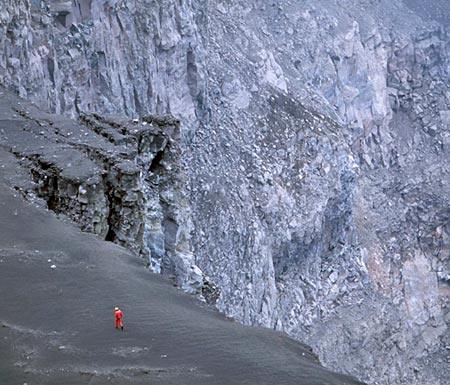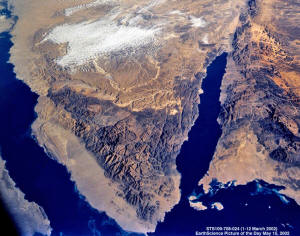|
by Zecharia Sitchin November 2001 from Sitchin Website
At the end of the third millennium B.C. the great Sumerian civilization came to an abrupt end. Its sudden demise was bewailed in numerous lamentation texts that have been discovered by archeologists.
The texts ascribed the calamity to an
Evil Wind that came blowing from the west (from the direction of the
Mediterranean Sea) - a deathly cloud that caused excruciating death
to all living beings, people and animals alike, that withered plants
and poisoned the waters.
Used to obliterate the spaceport
that then existed in the Sinai Peninsula (and some “sinning cities”
such as Sodom and Gomorrah), the nuclear cloud then was carried by
the prevailing winds eastward, causing death and desolation in the
Lands Between the Rivers (Mesopotamia) - the empire of Sumer and
Akkad.
That the end was abrupt, was also certain. What
scholars deemed as still lacking was an explanation: How and what
caused it?
An initial study by Harvey Weiss and Timothy C. Wieskel of Harvard University was reinforced by a subsequent study (Geology, April 2000) by H.M. Cullen et al from the Lamont-Doherty Earth Observatory of Columbia University, the University of Utah, the Lawrence Livermore National Laboratory, and the Institute für Geowissenschaften, Germany.
Based on studies of unexplained aridity
and wind-blown dust storms and radiocarbon datings, they reported
that their readings indicated a date of 4025 years ago (plus or
minus a margin of 125 years).
Authored by Peter B. de Menocal of the Lamont-Doherty Earth Observatory of Columbia University, the study paid particular attention to sedimentary remains of Tephra; the telltale rock fragments confirmed the date 4025 Years Before Present.
And 4025 years, before the present year A.D. 2001
- is exactly 2024
B.C., as Zecharia Sitchin had determined in his 1985 book!
It is defined in geology textbooks thus:
Tephra Tephra includes large, dense chunks, light rock debris, and ash.
These burnt-through pieces of blackened gravel-like rock mostly fall
near their volcanic source; but ash-like particles can be carried by
prevailing winds over many miles and can stay aloft for more than a
year.
But as Zecharia has
pointed out in his book; there are NO VOLCANOES in the Sinai
Peninsula. In the Sinai Peninsula, the source of the wind-carried
dust remains a mystery.
|


